| | | Professionals in the Division of Environmental Analysis evaluate the potential impact of developing highway projects on air quality in the vicinity of the proposed project. |  | Air Quality | DEA Sections | 1 | Project Management |
| | | Archaeologists in the Cultural Historic Branch oversee completion of all required archaeological investigations for Federally-funded or permitted projects, and are responsible for coordination of the results of these investigations with various resource agencies (SHPO, ACHP, etc.) in conformance with Section 106 of the National Historic Preservation Act of 1966. |  | Archaeology | DEA Sections | 2 | Cultural Historic |
| | | Historians in the Cultural Resources Branch are responsible for evaluating impacts of proposed highway projects on historic properties. For Federal-aid projects or projects with other federal involvement, KYTC conducts this assessment in conformance with Section 106 of the National Historic Preservation Act of 1966. |  | Cultural Historic | DEA Sections | 3 | Cultural Historic |
| | | The Ecology and Permitting Branch assures that KYTC maintains compliance with the Clean Water Act and the Endangered Species Act. |  | Ecology and Permitting | DEA Sections | 4 | Ecology and Permitting |
| | | The Project Management Section of Environmental Analysis is tasked with the overall management of the environmental process in the development of highway projects. |  | Project Management | DEA Sections | 6 | Project Management |
| | | Highway traffic may create noise impacts on adjacent properties. KYTC evaluates current and predicted noise conditions and provides abatement where traffic noise impacts result from new highway projects. |  | Noise | DEA Sections | 7 | Project Management |
| | | Section 4(f) refers to the original section within the U.S. Department of Transportation Act of 1966 which established the requirement for consideration of park and recreational lands, wildlife and waterfowl refuges, and historic sites in Transportation project development. The law, now codified in 49 U.S.C. § 303 and 23 U.S.C. §138, is implemented by the Federal Highway Administration (FHWA) through the regulation 23 CFR 774. |  | Section 4(f) | DEA Sections | 8 | Project Management |
| | | Socioeconomic analysis considers the potential for impacts to land use, farmlands, residential and commercial relocations. |  | Socioeconomics | DEA Sections | 9 | Project Management |
| | | The UST/Hazmat and Remediation Section consists of a group of trained professionals who are responsible for assuring that regulatory and Federal Highway requirements are met within our state road/bridge projects and the KYTC maintenance facilities. |  | UST Hazardous Materials | DEA Sections | 10 | UST Haz Mat |
| | | Compiled by KDFWR with input from numerous Kentucky stakeholders, this plan focuses on the Monarch butterfly’s life cycle and habitat needs in relation to an ever-changing landscape. Subcommittees developed goals, challenges, and strategies to implement monarch conservation through a Kentucky Monarch Conservation Plan. Primary topics include: Education and Outreach, Funding, Private Lands, Public Lands, Research and Monitoring, and Rights-of-Way. | 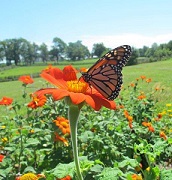 | Kentucky Monarch Conservation Plan 2018 | Biology | 27 | |
| | | Lead by the Kentucky Department of Agriculture, the Kentucky Pollinator Protection Plan is a multi-stakeholder effort to reduce bee hive deaths, to increase awareness of responsible agriculture chemical use, and to expand opportunities for education about all pollinators. It is designed to be flexible and adaptable to changing environmental stresses, and has established lines of communication that had not previously existed. | 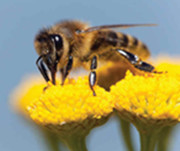 | KY Pollinator Protection Plan 2019 | Biology | 28 | |
| | | Emerald ash borer (EAB) was first discovered in Kentucky in 2009 and is currently spreading throughout the commonwealth. The University of Kentucky hosts an informational website on the pest’s distribution throughout the state, measures being taken to combat its infestation and who to contact if you suspect EAB is damaging trees on your property. | 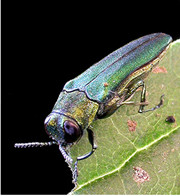 | Emerald Ash Borer | Biology | 30 | |
| | | An interactive statewide map of pollinator habitat areas along KYTC right-of-ways. |  | KYTC Pollinator Habitat Zones | Biology | 31 | |
| | | In 2020 KYTC partnered with the Office of Kentucky Nature Preserves to complete a five year study in an effort to identify and manage already existing pollinator habitat along rights-of-way. This study is an integral step as KYTC continues to grow its Pollinator Initiative in an effort to conserve Kentucky pollinator species, support Kentucky farmers who rely on pollinators for agriculture, mitigate erosion and flooding, and beautify our great state. | 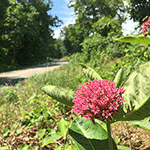 | Final 2025 OKNP Roadside Pollinator Habitat Report | Biology | 33 | Ecology and Permitting |
| | | 2023 FHWA Grant-funded study to reduce Wildlife-vehicle collisions (WVCs) across the Commonwealth. Phase One was to study a focused corridor along Interstate 64 and US Highway 60 between Frankfort and Louisville, two roads that experience high wildlife-related crash incidents compared to other facilities with similar traffic. Crash trends, roadway characteristics, deer population distributions and behaviors, and other environmental factors were studied to identify factors influencing WVCs. Data trends collected during the pilot study are critical to extrapolating high priority settings for WVC countermeasures statewide. | 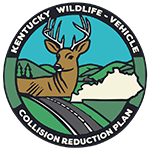 | Kentucky’s Wildlife-Vehicle Collision Reduction Plan-Pilot Study | Biology | 54 | Ecology and Permitting |
| | | This Species Abbreviations list provides both common and Latin names for current Kentucky species with federal protections under the Endangered Species Act and the associated ‘EATS’ codes which are used in relation to project tracking within the Environmental Analysis Tracking System (EATS). This file is created and maintained by KYTC Biologists of Division of Environmental Analysis.
Note: A comprehensive county-level list of species is no longer being maintained. All official species lists should be generated via the US Fish and Wildlife Service IPaC website (see hyperlink provided below).
| 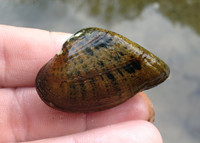 | Kentucky Threatened and Endangered Species List April 2018 | Biology | 55 | |
| | | Louisville Southern Indiana Ohio River Bridges Project |  | Kentucky Southern Indiana Ohio River Bridges Project | Event | 76 | |
| | | Brent Spence Bridge Project |  | Brent Spence Bridge Project | Event | 78 | |
| | | The Ohio River Crossing for I-69 at Henderson, Kentucky. |  | I69 Ohio River Crossing | Event | 79 | Cultural Historic |
| | | A really great resource for searching the web, images, news, and social media |  | Google.com | Event | 99 | |

